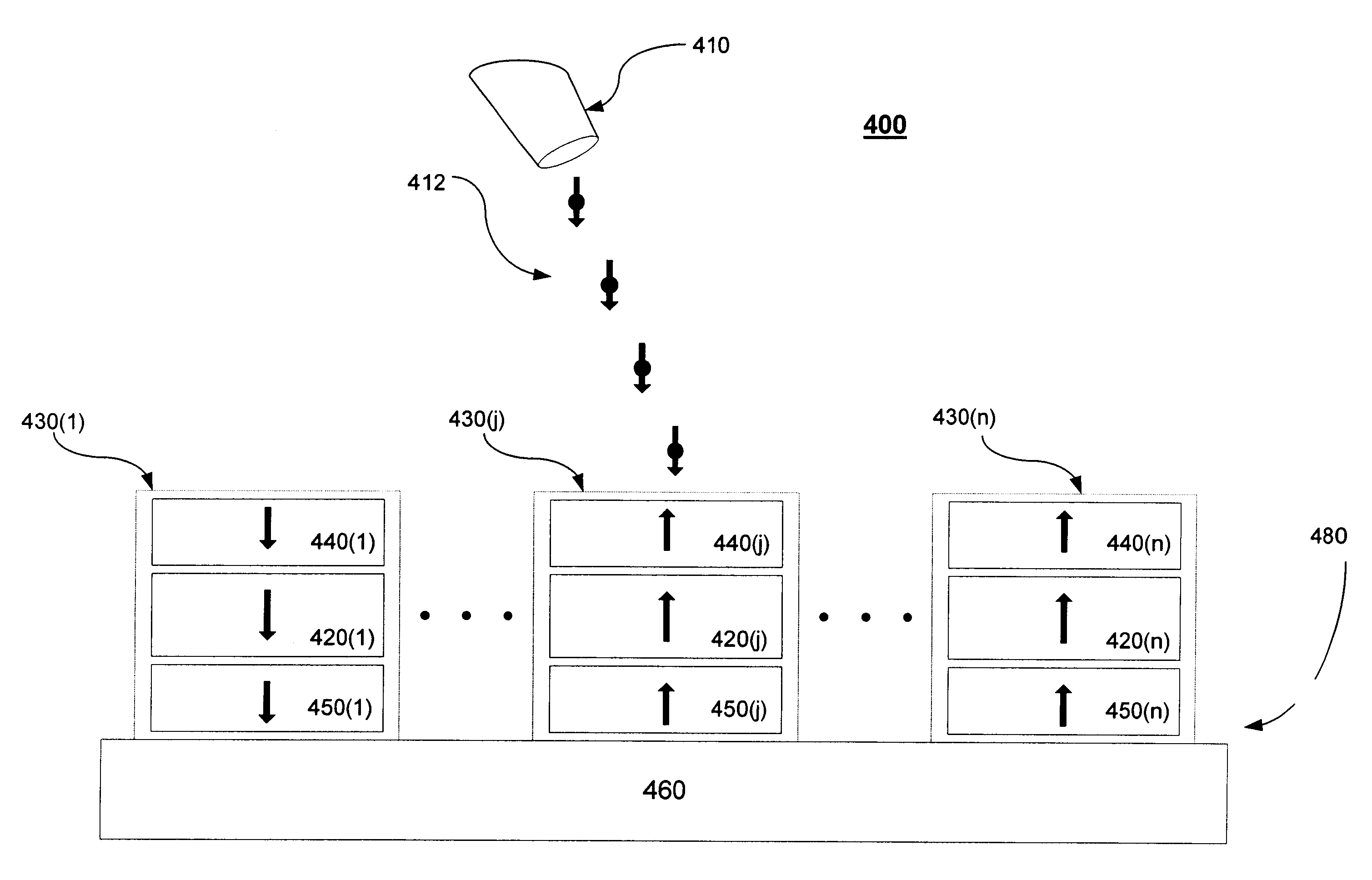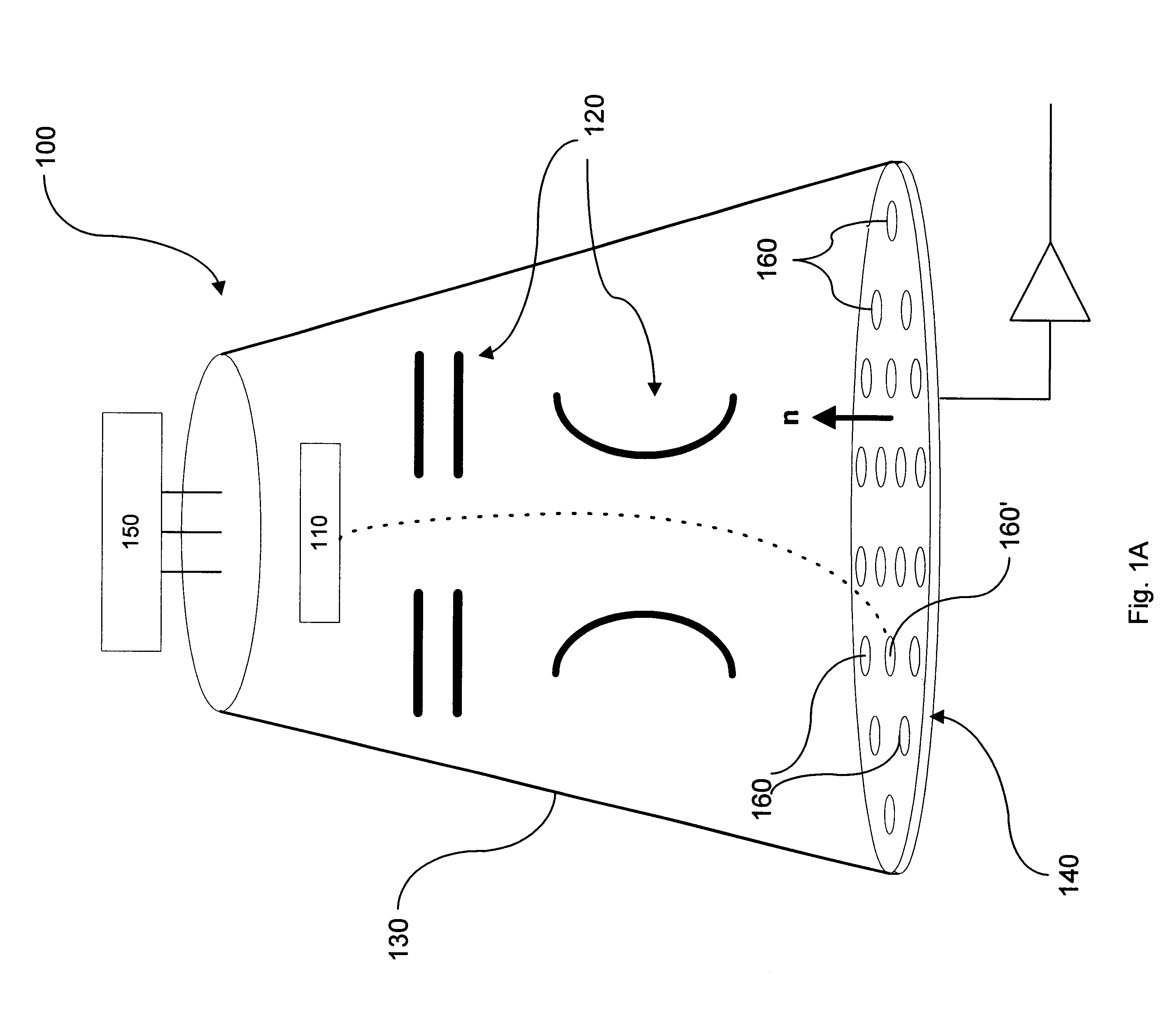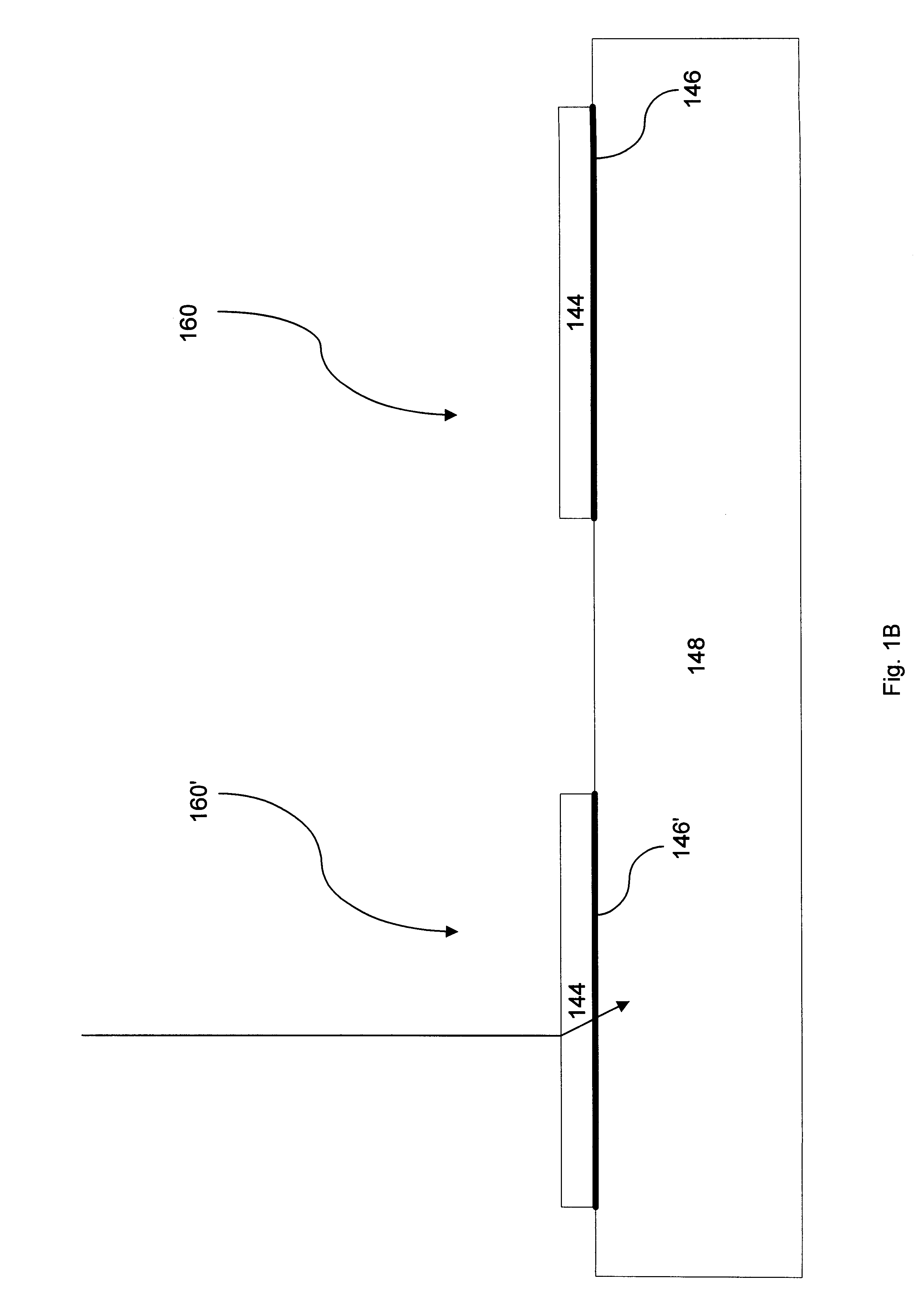Quantum magnetic memory
a magnetic memory and quantum technology, applied in the field of memory systems, can solve the problems of processing starving for data, difficult to alter the magnetic properties of the magnetic properties, and limited data transfer
- Summary
- Abstract
- Description
- Claims
- Application Information
AI Technical Summary
Benefits of technology
Problems solved by technology
Method used
Image
Examples
Embodiment Construction
The following discussion sets forth numerous specific details to provide a thorough understanding of the invention. However, those of ordinary skill in the art, having the benefit of this disclosure, will appreciate that the invention may be practiced without these specific details. In addition, various well-known methods, procedures, components, and circuits have not been described in detail in order to focus attention on the features of the present invention.
The present invention provides a system for reading data from and writing data to a storage medium, using a beam of spin-polarized electrons. A system in accordance with the present invention employs a storage medium that promotes enhanced coupling between the spin-polarized electrons of the beam ("beam electrons") and the electrons of a magnetic layer in the storage medium ("target electrons"). Beam electrons of a particular spin polarization are preferentially trapped in a volume that includes the magnetic layer, allowing ea...
PUM
 Login to View More
Login to View More Abstract
Description
Claims
Application Information
 Login to View More
Login to View More - R&D
- Intellectual Property
- Life Sciences
- Materials
- Tech Scout
- Unparalleled Data Quality
- Higher Quality Content
- 60% Fewer Hallucinations
Browse by: Latest US Patents, China's latest patents, Technical Efficacy Thesaurus, Application Domain, Technology Topic, Popular Technical Reports.
© 2025 PatSnap. All rights reserved.Legal|Privacy policy|Modern Slavery Act Transparency Statement|Sitemap|About US| Contact US: help@patsnap.com



